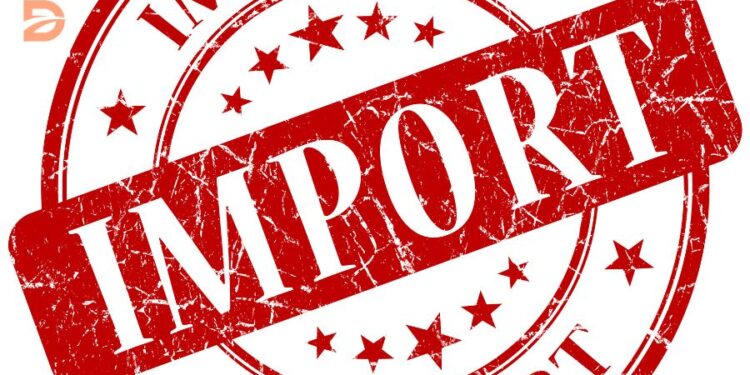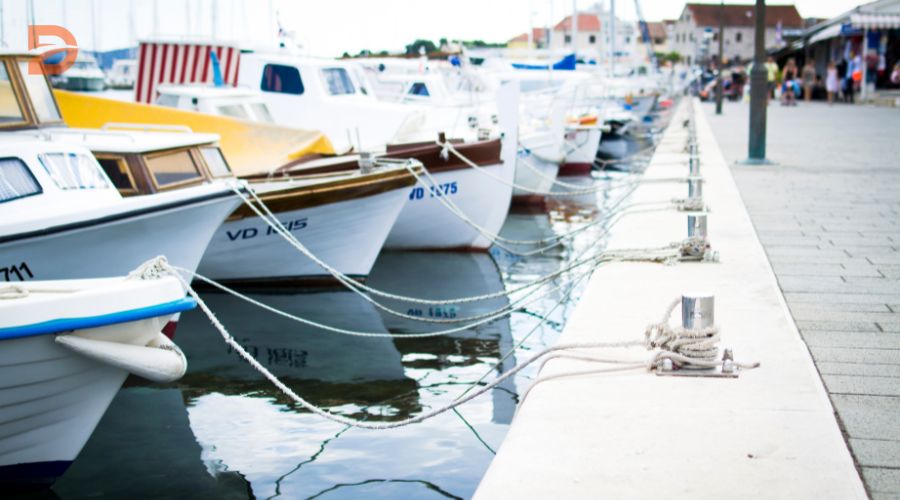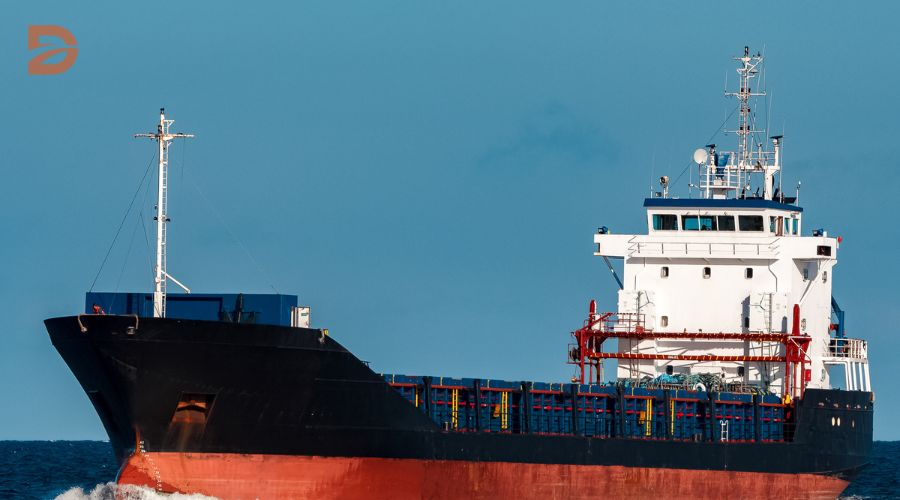Did you know that in the United States, the import duty rates for boats can range from as low as 1% to as high as 2.7%? Navigating the complex web of regulations and paperwork can be a daunting task for anyone looking to import a boat, whether it’s for personal use or a business venture. But fear not, this comprehensive guide will walk you through the key steps to import a boat seamlessly, from customs clearance to ensuring your vessel meets all necessary regulations.
Importing a boat to the United States can be a complex process, but with the right guidance, it doesn’t have to be a headache. Whether you’re purchasing a boat overseas or bringing in a personal vessel, you’ll find the information you need to make your dream a reality.
Key Takeaways
- Understand the import duty rates for different types of boats, ranging from 1% to 2.7%.
- Learn the necessary steps to report the arrival of a non-commercial imported boat and obtain a CBP cruising license.
- Familiarize yourself with the EPA standards and ownership documentation required for boat importation.
- Discover the unique considerations for importing a boat via trailer, including following motor vehicle regulations.
- Explore the process of importing a boat from Canada, including state-specific registration requirements.
Importation Process for Non-Commercial Boats
When importing a non-commercial boat to the United States, the owner must report the vessel’s arrival at the first port or place within the US. This can be done through phone, the CBP app, or in person at the nearest Customs and Border Protection (CBP) center. Within 48 hours of being notified, the owner must also fill out Form 1300. Additionally, all boats entering US waters must obtain a CBP cruising license, which is valid for one year and can help avoid certain duties.
Reporting Boat Arrival
The process of reporting a boat’s arrival is straightforward. Owners can notify the CBP through various methods, including:
- Calling the CBP hotline
- Using the CBP mobile app
- Visiting the nearest CBP office in person
Once the arrival has been reported, the owner must complete Form 1300 within 48 hours. This form provides the necessary information about the boat and its journey.
Obtaining Cruising License
In addition to reporting the arrival, all boats entering US waters must obtain a CBP cruising license. This license is valid for one year and can help boat owners avoid certain duties and fees associated with importing a vessel. The process to obtain the cruising license is quick and easy, and it can be done at the same time as the arrival reporting.
By following these straightforward steps, boat owners can ensure a smooth and hassle-free importation process for their non-commercial vessels. Keeping up with the necessary paperwork and obtaining the required licenses will help make the transition into US waters a seamless experience.
How to Import a Boat
Importing a boat to the United States can be a complex process, but with the right guidance, you can navigate it seamlessly. A crucial step is ensuring your vessel meets the Environmental Protection Agency (EPA) standards for boats. This can be achieved by completing the Engine Declaration Form or obtaining a note from the US agent of the boat’s manufacturer.
Meeting EPA Standards
To comply with EPA regulations, boat owners must demonstrate that their vessel meets the necessary emissions and safety standards. This can be done through the following steps:
- Fill out the Engine Declaration Form, providing details about the boat’s engine and emissions.
- Obtain a letter from the US agent of the boat’s manufacturer, confirming that the vessel meets EPA requirements.
Proving Ownership
In addition to meeting EPA standards, you’ll need to provide proof of ownership when importing a boat. Acceptable documents include a bill of sale, proof of purchase, or other documentation that clearly establishes your ownership of the vessel. These steps help ensure the boat is legally imported and meets all necessary regulations.
“Importing a boat can be a complex process, but with the right guidance and attention to detail, you can ensure a smooth and successful experience.”
By taking the time to understand and comply with the meeting EPA standards for boat importation and proving boat ownership for importation requirements, you can avoid headaches and successfully import your boat to the United States.
Import Duty Rates on Boats
When importing a personal boat to the United States, importers must consider various duty rates that apply. The current duty rates vary depending on the type of boat being imported. Motorboats and sailboats are subject to a 1.5% duty, while outboard motorboats have a 1% duty. Inflatable boats face a 2.4% duty, and other types of boats without sails or motors are subject to a 2.7% duty. Notably, there is no duty for canoes.
These duty rates are subject to change, so it’s crucial for boat owners to stay informed on the latest updates. Additionally, there are other taxes and fees associated with boat importation, such as the merchandise processing tax, import bond fees, and harbor maintenance taxes. It’s essential to factor in these additional costs when planning the importation process.
Duty Rates for Different Boat Types
- Motorboats and sailboats: 1.5% duty
- Outboard motorboats: 1% duty
- Inflatable boats: 2.4% duty
- Other boats without sails or motors: 2.7% duty
- Canoes: No duty
It’s important to note that the duty rates mentioned above are subject to change, and boat owners should stay updated on the latest information from the U.S. Customs and Border Protection (CBP) to ensure they are complying with the most current regulations.
“Boats valued in the seven figures could face hefty duty bills due to the 1.5 percent duty on imported vessels.”
Navigating the import duty landscape can be complex, and it’s crucial for boat owners to seek guidance from experienced professionals to ensure a smooth and compliant importation process.
Other Taxes and Fees
Importing a boat into the United States involves more than just federal import duties. Boat owners may also be subject to state-level taxes and fees, which can significantly impact the overall cost of the process. Understanding these additional charges is crucial for a seamless importation experience.
One of the primary state-level taxes to consider is sales tax or GST, which is typically paid during the boat purchase. The sales tax rate can vary widely across different states, ranging from as low as 2.9% to as high as 7.25%. Additionally, some states may impose personal property taxes on boats, with the amount based on the assessed value of the vessel.
Fuel taxes are another state-level fee that can add to the overall cost of boating. These taxes can fluctuate from state to state, affecting the operating expenses of the vessel.
For non-US citizens looking to import a boat, there may be additional considerations, such as the need to form a U.S. entity like an LLC for boat ownership. Careful financial planning is essential to avoid unexpected costs during the importation process.
By being aware of these state-level taxes and fees, boat owners can better prepare for the financial implications of importing their vessel into the United States. Conducting thorough research and seeking professional guidance can help ensure a smooth and cost-effective importation experience.
Importing a Boat via Trailer
When importing a boat using a trailer, the process differs slightly, as the regulations for motor vehicles apply. This means you’ll need to follow the relevant motor vehicle regulations and complete DOT Form HS-7, which requires information about the boat’s make and model.
Following Motor Vehicle Regulations
If you’re importing a boat on a trailer, you’ll need to adhere to the same motor vehicle regulations as you would for a car or other vehicle. This includes providing details about the boat, such as its make, model, and year of manufacture.
Completing DOT Form HS-7
To import a boat via trailer, you’ll need to fill out DOT Form HS-7, which is the Declaration of Importation of Motor Vehicles and Motor Vehicle Equipment Subject to Federal Motor Vehicle Safety, Bumper, and Theft Prevention Standards. This form requires information about the boat, including its identification number, make, model, and year of manufacture.
| Requirement | Details |
|---|---|
| Two applications for original vehicle/vessel dual registration | The vehicle/vessel combination will have two separate expiration dates. |
| Bond requirement | A bond may be required if the applicant cannot furnish ownership documents and if the vessel is valued at $2,000 or over. |
| Fees and penalties | Fees must be paid upon purchase to avoid payment of penalties. Whenever penalties are due on an original application, use tax penalties are also due. |
| Value under $2,000 | If the vessel is valued at less than $2,000, a Statement of Facts (REG 256) form is required indicating the price paid and what attempts were made to secure a California Certificate of Ownership. |
| Late fees | If fees are paid late, a penalty fee for late original registration is due as well as a 10 percent use tax penalty. |
Importing a boat via trailer can be a complex process, but understanding the motor vehicle regulations and completing the necessary paperwork, such as DOT Form HS-7, can help ensure a smooth and successful importation.
How to Import a Boat from Canada
If you’ve purchased a boat in Canada and want to bring it to the United States, you’ll need to register the vessel in the respective US state. The purchase must have taken place in Canada, and you’ll need to pay any applicable duties at the US border. It’s important to ensure the boat is received in Canada, as a foreign seller cannot directly transit the vessel to the US.
Registration in the Respective US State
When importing a boat from Canada, you’ll need to register the vessel in the specific US state where you plan to use it. This process typically involves the following steps:
- Obtain a title or bill of sale from the Canadian seller.
- Submit the necessary documentation, such as the title or bill of sale, to the state’s Department of Motor Vehicles (DMV) or equivalent authority.
- Pay any applicable registration fees and taxes, which may include a state sales tax or use tax.
- Receive your state-issued boat registration and registration numbers, which must be displayed on the vessel.
It’s important to note that the importation process and registration requirements may vary by state, so it’s essential to research the specific regulations in the state where you plan to operate the boat.
Importing a boat from Canada can be a straightforward process, but it’s crucial to follow the proper procedures to ensure compliance with US regulations. By understanding the registration requirements and paying any necessary duties, you can successfully bring your Canadian-purchased boat to the US and enjoy the open waters.
Considerations for Non-US Citizens
If you’re a non-US citizen looking to import a boat for personal use within the country, your vessel will be considered unregistered. To ensure a seamless process, it’s crucial to understand the legal requirements for boat ownership and registration as a non-US citizen.
One key consideration is that non-US citizens are required to undergo an in-person inspection of their vessel upon arrival in the United States. This is in contrast to US citizens, who can use the Reporting Offsite Arrival – Mobile (ROAM) app to digitally report arrival information and potentially avoid in-person inspections.
Additionally, non-US citizens will need to obtain a Customs and Border Protection (CBP) decal, known as a DTOPS decal, to facilitate their reentry into the country. The cost for this decal is $29.96, and it’s essential to have it in place, as boats without a DTOPS decal must pay the CBP’s reentry fee every time they return from a foreign port.
It’s also important for non-US citizens to have their proof of citizenship ready for potential CBP inspections, as this can help streamline the process and avoid any unnecessary delays.
“All yachts arriving in the USA from a foreign port must report their arrival in US waters immediately via a face-to-face inspection with CBP.”
To make the process even smoother, the CBP introduced the CBP ROAM App in 2018, which allows boaters to present themselves using Video Chat. This can be particularly helpful for non-US citizens, as it can simplify the clearing process.
Overall, importing a boat as a non-US citizen requires careful attention to the legal requirements and procedures. By understanding the necessary steps and documentation, non-US citizens can navigate the process with confidence and ensure a hassle-free boat import experience.
Conclusion
Importing a boat to the United States can be a complex process, but with the right information and guidance, it doesn’t have to be a headache. By understanding the key takeaways for importing a boat, you can successfully navigate the necessary steps and bring your dream vessel to the US.
This comprehensive guide has provided you with a summary of the steps to import a boat, covering the importation process, meeting EPA standards, navigating duty rates and taxes, and following the necessary regulations. Whether you’re purchasing a boat overseas or transporting a personal vessel, the information presented here can help make your boat importation a hassle-free experience.
By staying informed and prepared, you can take advantage of the potential savings and quality benefits of importing a boat from the US. With the right approach, your boat importation journey can be a smooth and rewarding experience, bringing you one step closer to enjoying your new watercraft on the open waters.
FAQ
What is the process for reporting a non-commercial boat’s arrival in the United States?
The owner must report the vessel’s arrival at the first port or place within the US through phone, the CBP app, or in person at the nearest Customs and Border Protection (CBP) center. They must also fill out Form 1300 within 48 hours of being notified.
What is required to obtain a CBP cruising license when importing a boat to the US?
All boats entering US waters must obtain a CBP cruising license, which is valid for one year and can help avoid certain duties.
How can a boat owner demonstrate that their vessel meets EPA standards for importation?
Boat owners can demonstrate compliance with EPA standards by filling out the Engine Declaration Form or obtaining a note from the US agent of the boat’s manufacturer.
What proof of ownership is required when importing a boat to the US?
Proof of ownership, such as a bill of sale or proof of purchase, is required to import a boat to the US.
What are the current import duty rates for different types of boats?
The current duty rates are 1.5% for motorboats and sailboats, 1% for outboard motorboats, 2.4% for inflatable boats, and 2.7% for other types of boats without sails or motors. There is no duty for canoes.
What other taxes and fees may be applicable when importing a boat to the US?
In addition to federal import duties, boat owners may also be subject to state-level taxes and fees, such as sales tax or GST, as well as personal property taxes.
What are the requirements for importing a boat to the US using a trailer?
When importing a boat using a trailer, the process will be slightly different, as the rates applicable for motor vehicles will apply. In this case, you’ll need to follow the relevant motor vehicle regulations and complete DOT Form HS-7.
What are the considerations for importing a boat from Canada to the US?
If you’ve purchased a boat in Canada and want to bring it to the United States, you’ll need to register the vessel in the respective US state. The purchase must have taken place in Canada, and you’ll need to pay any applicable duties at the US border.
What are the requirements for non-US citizens looking to import a boat for personal use within the country?
If you’re a non-US citizen looking to import a boat for personal use within the country, your vessel will be considered unregistered. If you plan to move the boat outside the current jurisdiction, you’ll need to fill out Form 1300.











